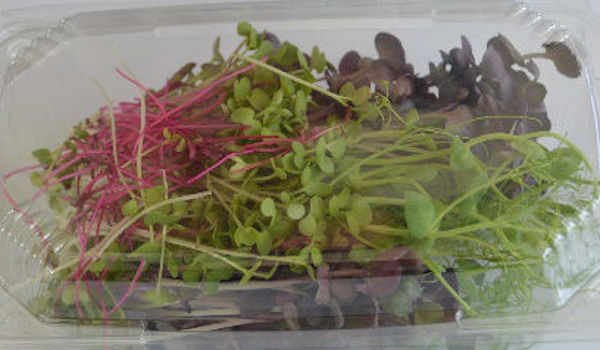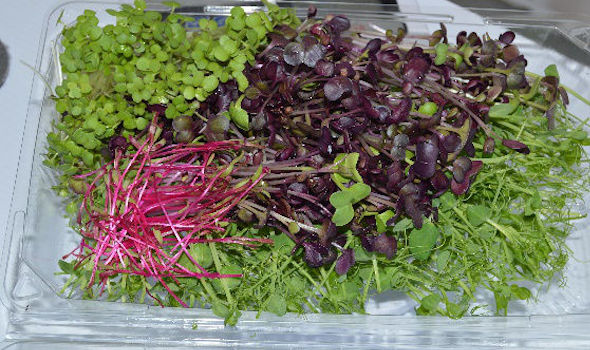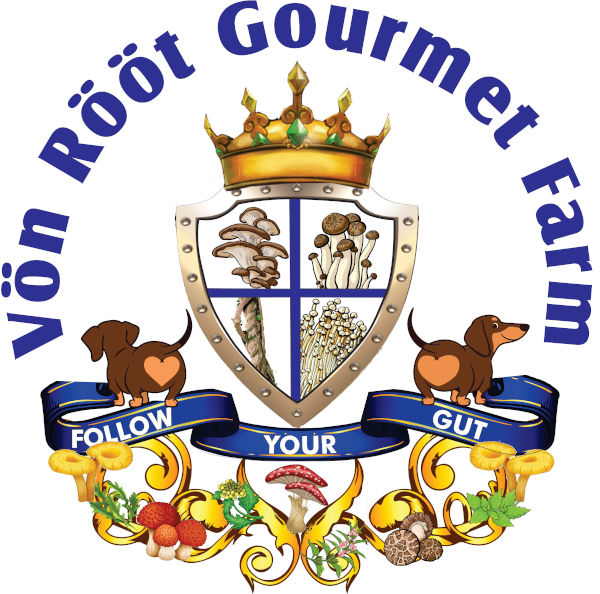Arugula (Rocket)
Bulls Blood Beet
Red Daikon Radish
Pea
Sunflower
Yellow & Green Mustard
Vön Rööt Gourmet Farms – Microgreens in South Africa
Our growing principle and idea for microgreens started whilst exploring holistic medicines without any harmful toxins in a busy city life environment. To our surprise microgreens offered the lifestyle and nutritional benefits that we were seeking for.
We grow organically and without any chemical pesticides. Our planting trays are food safe. We thrive to sustain our environment by using bio-degradable products as far as possible. Our continuous improvement projects include creating compost from harvested microgreen substrate & harvested mushroom substrate. We are also exploring hydroponic growing methods to supply a ready to eat without rinsing products to our customers.
Our Microgreens
We offer a wide range of microgreens and can also cater for specific demand on microgreens, we have listed a few microgreens that is available on a continuous basis, sold individually or as a mix. Mixes contain Pea or Sunflower, Japanese Red Daikon Radish, Mustard or Rocket & Bulls Blood Beet.
30g Mixed Microgreens

90g Mixed Microgreens

Contact Us Today or Place Your Order Now
Microgreen Definition
Small, tasty, fresh, crunchy, colorful & healthy. So many words come to mind describing these small vegetables: microgreens, the new re-discovered ingredient. Until now they were mainly used by chefs in high-end restaurants to garnish and add colors and surprising flavors to dishes.
However, these small plants are increasing rapidly in popularity and are starting to find their way to our homemade dishes. Microgreens are not only there to bring a colorful touch to our dishes, they are also amazingly rich in nutrients such as vitamins, minerals, carotenoids and fibers.
Malnutrition and lack of minerals or vitamins are no longer problems that only appear in developing countries. They have never been so relevant in developed countries as today. One of the best ways to fight against this phenomenon is a healthy diet, meaning eating the fresh fruits and vegetables that give you all the micro-elements needed to maintain your body in good health.
What are main the differences between microgreens and the full-grown vegetables?
As we have all been taught when we were little, we should eat our greens. Most of the nutrients, needed for the well-being of our body are found in fruits and vegetables: such as vitamins, carotenoids, antioxidants, fibers and minerals.
Superpower
Another one of their super-powers is their wealth in minerals, mainly calcium (for cell physiology, bone and tooth growth) and potassium (crucial for neurons and muscles). These concentrations are highly linked to the nutrient solution that is used for the growing of microgreens. Having such an impact on the concentrations can be quite useful for people suffering from certain diseases such as impaired kidney function and cardiovascular disease.
So, even though the studies on microgreens are still relatively new and not very extensive yet, it was already revealed that they have a lot of potential in terms of nutrients supply and dietary impact! That way, microgreens can be then seen as a “super-food” with several positive qualities on human health.
What are microgreens?
These small vegetables are young shoots which are harvested typically 5 to 20 days after germination, when they only measure a few centimeters high. The microgreens are harvested at an earlier stage compared to their mature counterparts.
The 3 edible components of a microgreen: the central stem, the cotyledon leaves and the young true leaves.
At this stage, most of the microgreens are formed of a central stem, two developed “cotyledon” leaves (leaves contained in the seed and which, when fully developed, help the young seedling to evolve thanks to photosynthesis) and sometimes a second pair of young “true” leaves.
Most of the time the shape between cotyledon and young true leaves is quite different. For many herbs and vegetables, it’s possible to eat their equivalent as microgreens, like coriander, basil, mustard rocket or radish, just to name a few.
With an especially rich flavor, these small vegetables are an explosion for our taste buds while bringing loads of nutritive elements as well!











